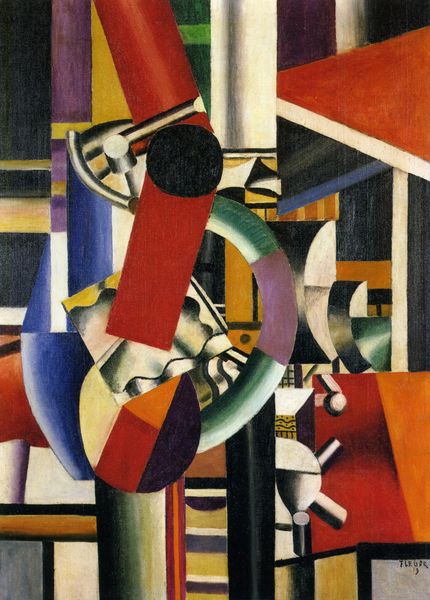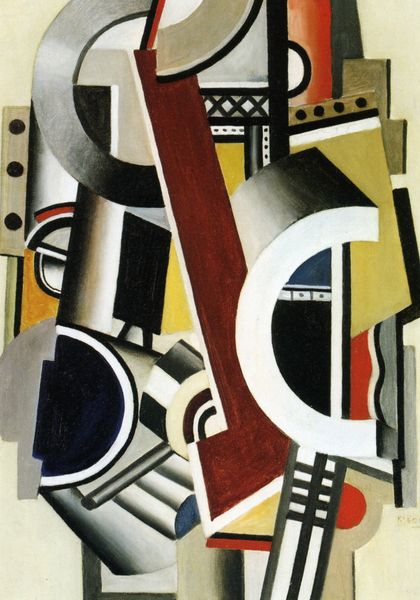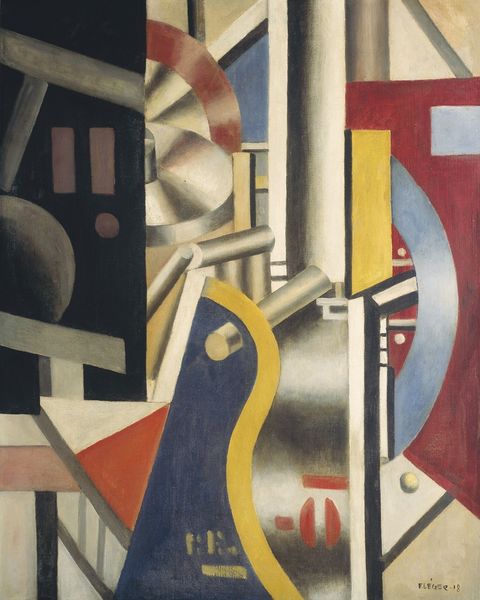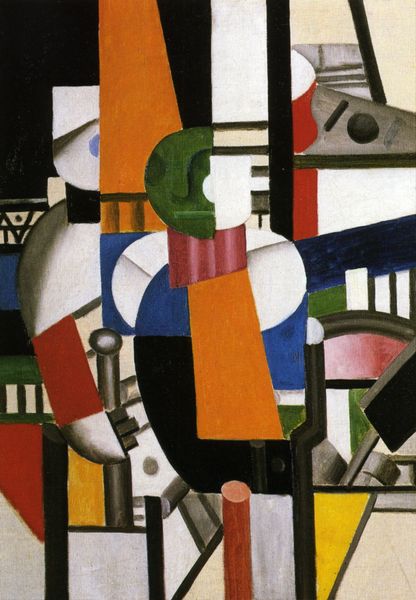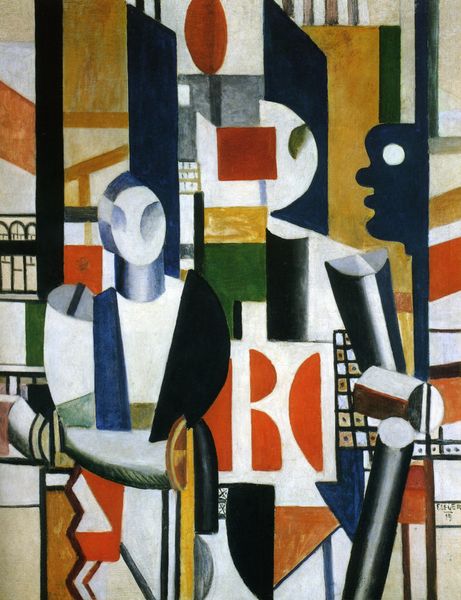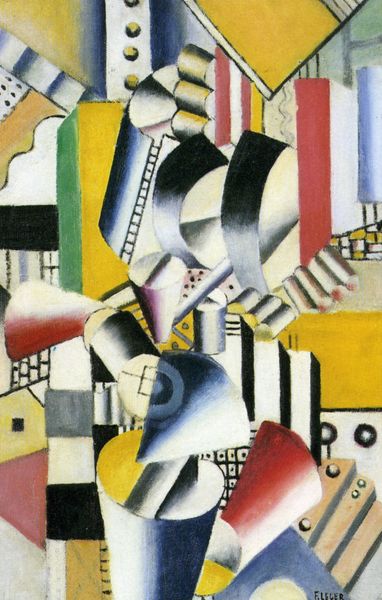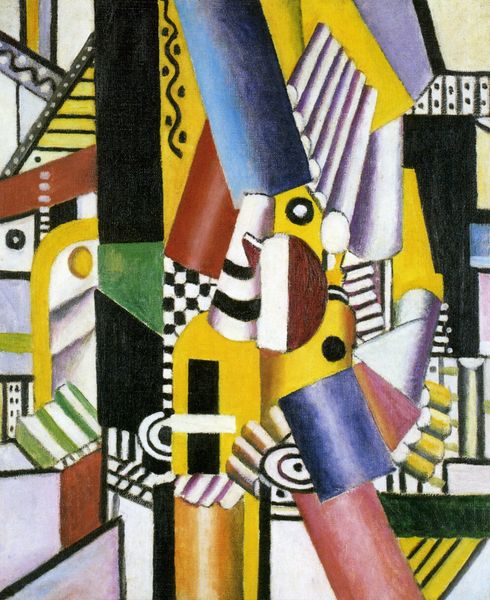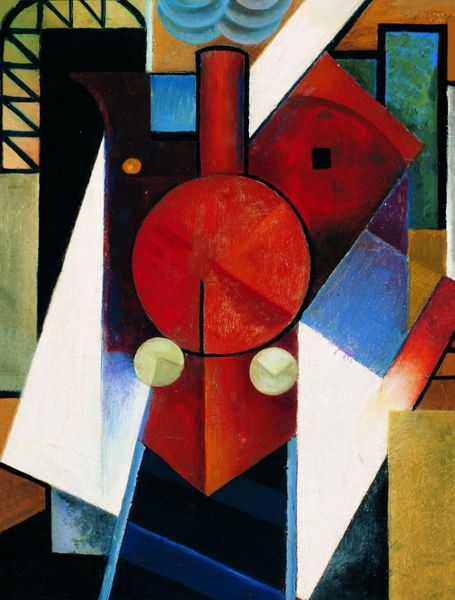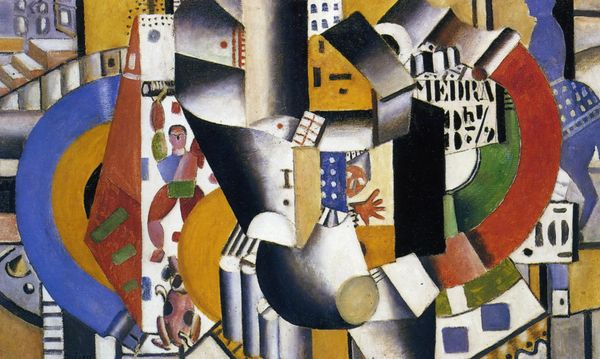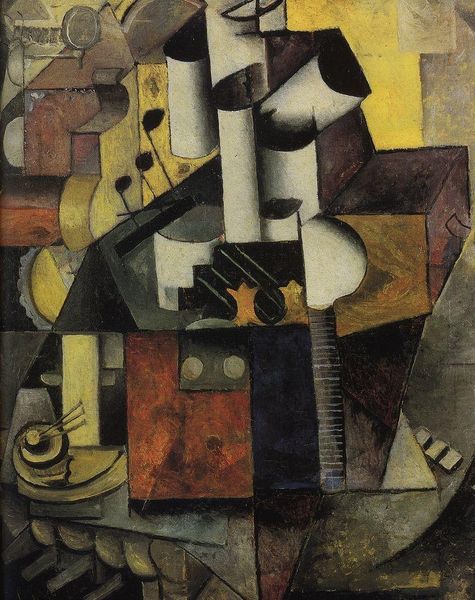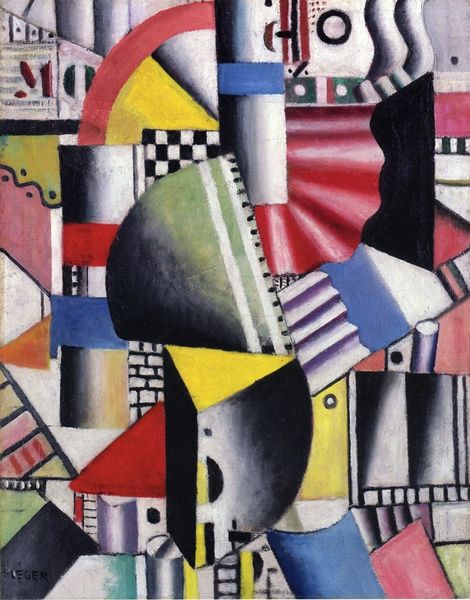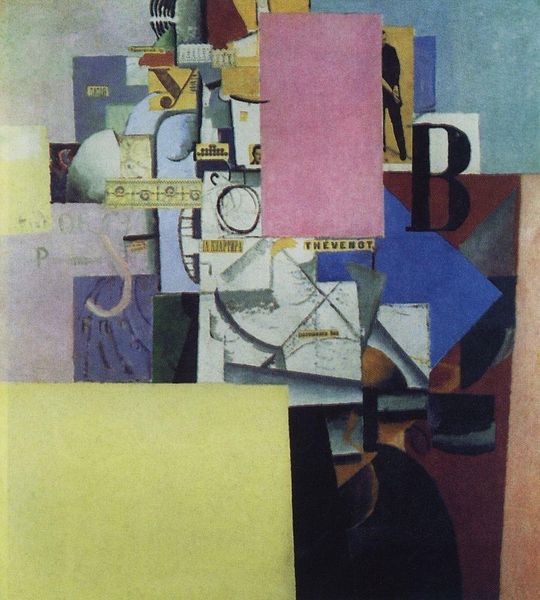
painting, oil-paint
#
portrait
#
cubism
#
painting
#
oil-paint
#
figuration
#
geometric
#
modernism
Dimensions: 130 x 97 cm
Copyright: Public domain US
Editor: This is Fernand Léger’s 1919 painting, "The Typographer," done in oil paint. It feels like a deconstruction of a person, almost like an industrial portrait. What social narratives do you see at play here? Curator: It’s fascinating to consider this piece through the lens of labor and identity in the early 20th century. Léger’s focus on geometric forms reflects the machine age and its impact on human experience, especially work. Notice how the "Typographer" seems to meld with the tools and products of his trade. How do you interpret the way Léger depicts the figure's relationship with typography itself? Is he empowered, or subsumed? Editor: It's unsettling – the figure isn’t necessarily heroic, more like a cog in a larger system. The man’s individual features are replaced by, or perhaps integrated into, the lettering, forms, and colours. What kind of commentary might Léger have been making on the relationship between labour and identity? Curator: I believe that Léger is prompting us to question the dehumanizing effects of industrial labor, but not without celebrating its potential. Consider the sociopolitical climate of post-World War I Europe – there was this tension between embracing technological advancement and fearing its implications on individuality. Léger perhaps reflects both this fear and aspiration by connecting the figure to written forms as an exploration and a loss of self. Do you think this image celebrates the printing press, or suggests that labor can rob someone of their humanity? Editor: I see the tension now, and maybe a bit of both. There’s a clinical feel to it, but at the same time a kind of visual excitement from all the colours. It's a complicated statement. Curator: Indeed, it's this complexity that makes it powerful, isn't it? Léger encourages us to interrogate not just what we see, but the power structures inherent in representation itself, specifically related to work and identity. Editor: I see how focusing on those tensions between technological optimism and social anxiety opens up richer interpretations of Léger's work. Thanks.
Comments
No comments
Be the first to comment and join the conversation on the ultimate creative platform.
